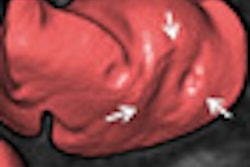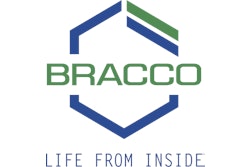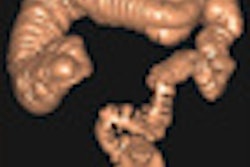New research on virtual colonoscopy from Japan found the technique to be helpful in diagnosing even patients without colorectal cancer and polyps, and it was especially useful for those with contraindications to conventional colonoscopy, according to a study in the Japanese Journal of Radiology.
The researchers from Tokai University School of Medicine noted that virtual colonoscopy (also known as CT colonography or CTC) is rare in Japan and limited mainly to presurgical evaluation of patients with colorectal cancer. Colonic exams are almost always performed with colonoscopy and barium enema. But the utility of VC goes far beyond the detection of colorectal polyps and cancer, wrote Dr. Tamachi Ichikawa and colleagues.
"The major advantage of CTC over conventional colonoscopy is the ability to visualize not only the endoluminal surface but also the extracolonic images on two-dimensional imaging," including multiplanar reformatted (MPR) images, they wrote (Jpn J Radiol, July 2011, Vol. 29:6, pp. 386-393).
The retrospective study included 44 patients (24 men, 20 women; mean age, 59.5 years), who underwent CTC for a variety of indications:
- Incomplete colonoscopy (n = 15)
- Diverticular disease (n = 7)
- Crohn's disease (n = 6)
- Suspected submucosal tumor (n = 4)
- Ischemic colitis (n = 2)
- Postoperative rectal carcinoid (n = 1)
- Noncolorectal malignancy (n = 6)
- Endometriosis (n = 1)
- Angiodysplasia, colon (n = 1)
- Compression, colon (n = 1)
All exams were performed on a 64-detector-row scanner (Somatom Sensation Cardiac 64, Siemens Healthcare), following cathartic bowel cleansing with polyethylene glycol. Manual CO2 insufflation of the colon was performed in seven patients and automated CO2 insufflation (ProtoCO2l, Bracco Diagnostics) in 35. Intravenous contrast administration was used "as needed" in 17 of 42 patients, the group wrote.
Two radiologists with experience in more than 150 CTC cases each evaluated the findings by consensus, evaluating colonic and extracolonic findings, and classifying the latter into major, moderate, or minor clinical significance.
In all, 47 CTC exams were performed in the 44 patients without complication. The researchers identified significant colonic findings in 36 of the 47 CTC exams; a total of 42 findings were identified in 31 patients:
- Colonic stenosis (n = 11)
- Diverticular disease (n = 9)
- Inflammatory changes (n = 9)
- Colonic polyp (n = 8)
- Colonic compression (n = 3)
- Abnormal vessels (n = 1)
- Submucosal tumor (n = 1)
The six malignancies diagnosed included three ovarian cancers, one lung cancer, one breast cancer, and one lower pharyngeal and esophageal cancer. Two malignant stenoses were detected in one patient with ovarian cancer and one with lower pharyngeal and esophageal cancer. Two patients were operated on after CTC, including one with angiodysplasia of the colon and one with a submucosal colonic metastasis.
Seventeen of the 44 patients had already undergone colonoscopy before CTC and five patients after CTC, the authors wrote. Four of five patients suspected of having a submucosal tumor at colonoscopy were found to be free of them at CTC.
There were 22 findings of major clinical importance, including mesenteric inflammatory changes, malignant ascites, liver metastases, ovarian cancer, and hydronephrosis, the group wrote. The 19 findings of moderate clinical importance included gallstones, uterine leiomyoma, liver hemangioma, and inguinal hernia. The 17 findings of minor importance included liver and renal cysts, enlarged prostate, and bladder diverticula.
Most patients can be successfully examined with colonoscopy and barium enema, but colonoscopy is incomplete in 6% to 26% of patients, rising to 22% to 33% in the elderly, according to Ichikawa and colleagues.
CTC "is a less invasive imaging technique that has the advantages of rapid data acquisition, minimal patient discomfort, no need of sedation, and virtually no recovery time," they wrote. The sensitivity is on par with that of conventional colonoscopy, and CTC really excels in its ability to visualize extracolonic as well as colonic abnormalities. "This is why CTC is used for colorectal cancer screening in Western countries," they wrote, adding that it is useful for evaluating the proximal colon in patients with incomplete colonoscopy.
While bowel preparation for colonoscopy requires large amounts of polyethylene glycol, CTC can be performed following a low-fiber diet, 20 mg of magnesium citrate, and a laxative administered a day before the scan, they noted. The prep is less invasive, and two patients who refused colonoscopy were included in the CTC exam.
"On the other hand ... flat lesions are more difficult to detect at CT," the group wrote. "The most significant limitation of CTC is that a pathological specimen cannot be obtained."
Unlike colonoscopy or CT without preparation, "CTC was able to prove the existence of both colonic and extracolonic findings, so it may reduce the number of colonoscopies performed after CTC," Ichikawa and colleagues wrote, noting its utility in elderly and feeble patients unable to undergo conventional colonoscopy.
"We believe that CTC does not replace colonoscopy, but it is one of the least invasive tools for evaluating the colon," they concluded.




















